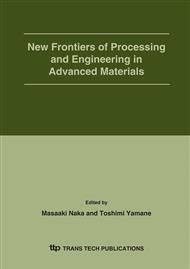p.87
p.95
p.99
p.105
p.111
p.117
p.123
p.129
p.139
Utilization of Generalized Chemical Potential Diagrams for Multi-Component Systems in Understanding Interface Stability
Abstract:
Utilization of chemical potential diagrams is powerful in predicting the chemical stability of dissimilar materials and analyzing the diffusion path when reactions are proceeded. Since practical materials consist of many components so that construction of chemical potential diagrams for the multi-component systems becomes crucial. There is one powerful way of treating phase equilibria for such complicated systems in chemical potential diagrams; that is, a construction of three dimensional diagrams, although all phase relations are not visible in such a diagram. To make phase relations visible, there are several ways; one is to make selected phase transparent. This makes it possible to examine the detailed relations between selected materials. Second one is to make dissections at selected values for the chemical potential of selected chemical species. By swinging the dissected value, the change in phase relations can be examined as a function of given chemical potential. Some examples will be given for the formation of oxide scale on ferritic alloys.
Info:
Periodical:
Pages:
111-116
Citation:
Online since:
December 2005
Price:
Сopyright:
© 2005 Trans Tech Publications Ltd. All Rights Reserved
Share:
Citation:


